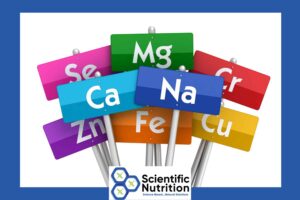Your toxic deodorant could be making you fat, causing hormonal disruptions, or even cancer?
Summer heat brings increased sweating, and with it, our reliance on deodorants and antiperspirants. What if the very products designed to keep us fresh are putting our health at serious risk?
Recent research reveals that conventional deodorants contain a cocktail of toxic chemicals that penetrate your skin and accumulate in your body, potentially leading to cancer, hormone disruption, and neurological damage.
While the beauty industry markets these products as essential for personal hygiene, they’re quietly omitting a crucial fact: many deodorant ingredients have been linked to serious health consequences. A Danish study in 2023 found that 13 out of 57 store-bought deodorants contained potential endocrine disruptors that “can contribute to obesity, reduced sperm quality and certain hormone-sensitive forms of cancer.”
Why Your Deodorant Could Be More Dangerous Than You Think
The Science Behind Body Odor and Deodorant Function
Your body naturally regulates temperature through sweating, particularly in areas like your armpits, where apocrine glands are concentrated. While sweat itself is almost odorless, composed of approximately 99% water and 1% salt, protein, electrolytes, urea, and ammonia, excessive sweating, combined with the reaction between skin bacteria and sweat compounds, causes noticeable body odor.
Deodorants work by suppressing odor-causing bacteria growth, while antiperspirants use aluminum salts to block sweat ducts entirely. However, this process comes with hidden health costs that manufacturers rarely discuss.
The Toxic Truth: 7 Dangerous Deodorant Ingredients You Need to Avoid
1. Aluminum: The Heavy Metal Hiding in Your Antiperspirant
Aluminum is perhaps the most concerning ingredient found in conventional antiperspirants. A 2017 study published in the journal eBioMedicine found that aluminum salts don’t just stay where you apply deodorant; they accumulate in breast tissue, and possibly elsewhere.
The research revealed that women using aluminum-containing deodorants more than once daily had higher breast cancer risk compared to non-users. Even more alarming, women with breast cancer who frequently used aluminum products showed higher aluminum concentrations in their breast tissue.
As a naturally occurring heavy metal, aluminum is known for its neurotoxic effects. Studies have shown that it can cause lung fibrosis, kidney damage, hormonal imbalances, and cancers. An article in Archives of Toxicology also noted that aluminum can accumulate in the brain and contribute to the development and progression of neurodegenerative disorders like Alzheimer’s.
Health Alert: Through Hair Analysis testing, I can detect aluminum toxicity in my clients, providing crucial early warning signs of accumulation before serious health issues develop.
2. Triclosan: The Banned Antimicrobial Still Lurking in Your Deodorant
In 2016, the U.S. Food and Drug Administration (FDA) banned triclosan use in soap products, while the European Union (EU) formally banned triclosan from all hygiene products in 2017. Although prohibited in many countries, this dangerous antimicrobial agent remains legal in American deodorants, toothpastes, and hand sanitizers!
Triclosan contributes to antibiotic resistance, creating “superbugs” that are resistant to treatment. More concerning is its role as an endocrine disruptor. Triclosan has been shown to increase estrogen and progesterone production to abnormal levels, which could raise women’s risk of ovarian and breast cancers. Meanwhile, in men, triclosan has been proven to promote the proliferation of prostate cancer cells.
Despite evidence showing triclosan acts as an endocrine disruptor in laboratory animals and contributes to antibiotic resistance, the FDA maintains that “Triclosan is not currently known to be hazardous to humans,”. Ironically, it acknowledges that research has evolved since this designation.
3. Parabens: The Hormone Mimickers Accumulating in Breast Tissue
Parabens serve as preservatives in water-based personal care products, preventing bacterial and mold growth. However, studies show that parabens in leave-on products such as deodorants are absorbed into the body through the skin, metabolized, and eventually secreted in urine. Not all the parabens that enter your body leave this way; some remain intact and accumulate in certain tissues.
A study published in the Journal of Applied Toxicology reported that parabens can be extracted from human breast tissue. Analysis of 20 human breast tumor samples revealed that they contained parabens that remain completely unmetabolized, with methylparaben being the most common paraben lingering in breast cancer tissue.
Parabens’ ability to mimic the hormone estrogen allows them to interfere with the normal biological processes of breast cells, triggering abnormal growth and increasing breast cancer risk. A 2023 study also found that parabens tend to accumulate more in malignant breast tumors than benign tumors, suggesting that parabens may also act as activators of metastasis.
Your lymphatic system can’t keep up. This is where I can help you work on multiple detoxification modalities to clear elimination pathways!
4. Phthalates: The Plastic Chemicals Disrupting Your Hormones
While commonly associated with plastic products, phthalates are also used in personal care products as solvents and fragrance stabilizers. According to a 2021 study published in the journal Healthcare, there is a significant association between phthalate exposure and adverse reproductive outcomes in both women and men. Numerous studies have also linked phthalates to insulin resistance, Type 2 diabetes, obesity, allergies, and asthma.
Who would have imagined your toxic deodorant could be making you fat?
Di(2-ethylhexyl) phthalate (DEHP), a phthalate found in food, household dust, and personal care products like deodorants, has been found to increase systolic blood pressure. They also contribute to earlier menopause, pregnancy loss, and premature birth.
Phthalates’ endocrine-disrupting activities involve reducing testosterone and estrogen levels. They block the normal functions of thyroid hormones, affecting fertility in both men and women as well as impacting mental development in babies exposed in utero.
5. Diethanolamine (DEA): The European-Banned Carcinogen
Though less common, some deodorants contain diethanolamine (DEA), a chemical banned by the European Commission in cosmetics. Let’s break this down further.
DEA becomes dangerous when it reacts with other ingredients in cosmetic products, particularly preservatives that break down into nitrogen. This reaction results in the formation of nitrosamines, which are classified by the International Agency for Research on Cancer as a known carcinogen.
In animal studies, DEA increases the risk of liver and kidney cancers by causing chronic choline deficiency, disrupting cellular processes, and triggering tumor development. Studies in rats and mice have found that exposure to DEA, including topical application, causes precancerous changes in the skin and thyroid glands. We are also mammals, so it can affect us in the same manner.
6. Synthetic Fragrances: The Neurotoxins Masquerading as Pleasant Scents
Manufacturers prefer synthetic fragrances over natural alternatives due to their low cost, but these petroleum-derived compounds carry significant health risks. According to a 2023 report published in the Journal of Xenobiotics, many synthetic fragrances can interfere with the functions of your nervous system. Prolonged exposure to these neurotoxins has links to developmental delays, poor adaptive function, hyperactivity, and impulsivity in children. They have links to aggression and depression, as well as an increased risk of Alzheimer’s Disease.
Many synthetic fragrances also act as endocrine disruptors, affecting different hormone receptors and causing dysregulation throughout the endocrine system. They frequently trigger allergic reactions like contact dermatitis, especially in sensitive individuals.
7. Steareth: The Hidden Source of Probable Carcinogens
Steareths appear to be harmless as emulsifying agents that help blend deodorant ingredients. However, their manufacturing process creates serious health concerns. Steareths synthesize using polyethylene glycol (PEG), which contains toxic manufacturing impurities like 1,4-dioxane.
This byproduct commonly contaminates steareth-containing products, and exposure to high amounts can cause kidney and liver damage. Even more alarming, 1,4-dioxane is considered a probable human carcinogen by the U.S. Environmental Protection Agency.
Another problematic ingredient used to make steareths is stearyl alcohol, which causes allergic contact dermatitis on several occasions. This inflammatory skin rash or burn is painful and takes time to heal.
The Government Response: Regulatory Gaps and Consumer Protection
FDA and EPA Positions on Deodorant Chemicals
The FDA acknowledges that consumers may not be able to determine from ingredient labels if phthalates are present in fragrances within cosmetic products. Despite reviewing available data, the FDA states it was “unable to find a sound, scientific basis to support taking regulatory action against cosmetics containing phthalates”.
While triclosan has had a ban in soap products since September 2016 following an FDA risk assessment, it remains at high concentrations in other personal care products such as toothpaste, mouthwash, hand sanitizer, and surgical soaps.
This regulatory patchwork leaves consumers vulnerable to chemical exposure through daily personal care routines. Buyer Beware!!!
Protecting Your Health: The Natural Deodorant Solution
What to Look for in Safe Deodorants
Safe, effective deodorants rely on natural ingredients like:
- Organic coconut oil for antimicrobial properties
- Baking soda for odor neutralization
- Organic beeswax for consistency
- Essential oils for natural fragrance
- Magnesium hydroxide for gentle odor control
Why Professional Guidance Matters
As a health practitioner specializing in toxin detection and elimination, I understand the complex relationship between everyday chemical exposure and long-term health outcomes. Through Hair Trace Mineral Analysis (HTMA) testing, I can identify aluminum toxicity and other heavy metal accumulations before they manifest as serious health problems.
My Health For Life Wellness Protocol includes a comprehensive personal care product breakdown, helping clients identify and eliminate toxic ingredients from their daily routines. This personalized approach ensures you’re not unknowingly exposing yourself and your family to harmful chemicals through seemingly innocent products.
Hair Analysis and Toxic Deodorant: Your Health Depends on It
The evidence is clear: conventional deodorants contain multiple ingredients linked to cancer, hormone disruption, and neurological damage. While regulatory agencies slowly catch up to the science, you can protect your health by making informed choices today.
Ready to eliminate toxic chemicals from your personal care routine?
Work with me for personalized recommendations on safe, effective deodorant brands that actually work. I’ll help you navigate the confusing world of “natural” marketing claims to find products that truly protect your health without compromising effectiveness.
Don’t wait for government agencies to protect you from these hidden dangers. Your health is too important to leave to chance, and the solutions are available right now. LET’S CHAT on a complimentary consultation!
More Sources:
- Environmental Working Group – Skin Deep Cosmetics Database
- FDA – Phthalates in Cosmetics
- EPA – Triclosan Facts
Disclaimer: This information is for educational purposes only and should not replace professional medical advice. Always consult with a healthcare provider before making significant changes to your health routine.
Copyright Scientific Nutrition, LLC 2025




